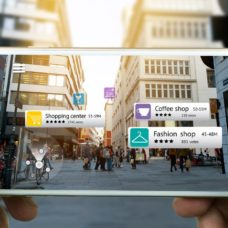HTC just released a new revamp of their virtual reality headset line.
Recent months brought the world tons of advances in the world of VR tech.
Microsoft quietly revealed a new AR/VR tool known as Maquette. VirtualLink created a universal connector for all VR headsets, which is huge. Wearables in VR tech also expanded the experience thanks to haptic technology like armbands and jackets.
Much of the VR world buzz revolves around the consumer base for private use. But plenty of companies and research groups use VR and AR tech. Now, HTC wants to turn its focus onto more business-oriented projects.
What are the HTC Vive Focus, Wave, and Sync and what do they do?
HTC Vive Focus, Wave, and Sync: 3 Tools for New Skills
HTC first announced this project long ago but released the first details last year. The once China exclusive headset launched worldwide today.
Though the Vive is popular among VR video game lovers, other competitors such as the Oculus Rift and the Microsoft HoloLens saw use in enterprise and industrial sectors including NASA.
In order to court more business clients, HTC mounted this project. The three-pronged approach features a new headset, a collaborative platform, and a software developer kit.
The “Focus” is the new standalone headset for enterprise use. The Vive Wave VR software developer kit pairs with Sync — the enterprise level collaboration tool.
HTC seems to want to push Vive more aggressively in business sectors.
The Vive Enterprise page features product pages, information on programs, and solutions for enterprise-level VR needs and problems.
It’s a smart move given how VR and AR can both be teaching tools.
More companies are also incorporating VR and AR elements into their company apps. Consider, for instance, the new IKEA app with similar capabilities to Pokémon: GO. Even Adobe wants to leverage VR in order to create 3D data visualizations.
What does this new system from HTC bring to the conference table?
A Sleek New Look With Impressive Specs
The new headset, as you can see above, comes in two colors: electric blue and almond white. However, the blue will cost you ¥4,299 or around $650 USD. The white goes for less at ¥3,999 or around $599 USD. The Vive Pro starts at around $1,399 for reference.
These prices are estimated as many outlets report varying price points. In fact, you can’t order it in the U.S. just quite yet. Their site redirects you to the EU version for buying and shipping as you can see by clicking “Buy Now”.
The headset itself features a 3K AMOLED 2880 x 1600 resolution with a 75 Hz refresh rate. It supports a 110 degrees FOV with World-Scale tracking, using 9-axis sensors. HTC claims the fast charging rechargeable battery has up to 3 hours of active use time.
The system includes a safety guide and warranty card along with:
- x1 headset
- x1 controller
- x2 AAA batteries
- x1 wrist strap
- an HTC rapid charger 3.0
- a USB Type-C cable
- the quick start guide
New capabilities include content from Viveport and no external base stations or sensors. It also features a Qualcomm Snapdragon 835 Mobile VR Platform.
It comes complete with enterprise services programs included with Vive Wave. This means that developers can now create content, hitting more than one VR headset. HTC announced that there are around 150 applications available so far with 15 hardware partners.
Curiously, this includes the company Shadow Creator which has its own headset launching on November 11th.
Vive Sync helps the development process by providing meeting and collaboration applications for your internal teams. This means a shared training and planning spaces along with vertical applications for industry.
The system benefits from updated tracking technology as The Verge mentions.
Only time will tell if HTC’s bid on enterprise level tech will pay off.

















Comments (0)
Least Recent